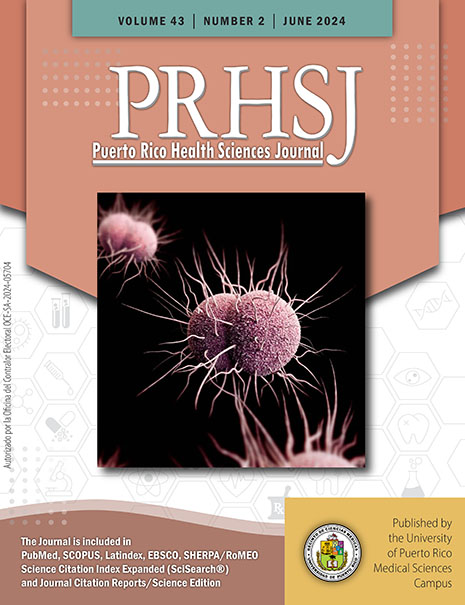Abstract
Objective: Vitiligo is a dermatological autoimmune condition characterized by areas of progressive skin depigmentation. Vitiligo lesions are cosmetically disfiguring and associated with significant psychological conditions such as depression and anxiety and comorbidities such as thyroid disease and diabetes. All races, ethnicities, ages, and regions of the world are impacted by vitiligo, with a global prevalence of about 0.5-2%. Currently, there is no published information available on the prevalence of vitiligo in Puerto Rico. Our study’s aim was to estimate the prevalence of vitiligo among patients attending the specialized clinic of dermatology at UPR School of Medicine in Puerto Rico and describe the distribution of cases by age and sex. Methods: We performed a descriptive study to evaluate the patients attending the University of Puerto Rico School of Medicine Clinics from January 2017 to May 2022. Using ICD-10 code L80 and medical records, we identified 581 patients with vitiligo and their respective demographic data distributed by sex and age. Results: Of the 581 vitiligo patients, 350 (60.2%) were women, and 231 (39.8%) were men. The median age in the vitiligo population was 33.5 years. Out of the studied sample, 30.2% were under the age of 18. Overall, there was an estimated prevalence of 5.2%. Conclusion: We report a vitiligo prevalence of 5.2% in a specialized clinic in Puerto Rico, suggesting further studies are necessary to discover possible underlying factors contributing to this increased prevalence.
Authors who publish with this journal agree to the following terms:
a. Authors retain copyright and grant the journal right of first publication with the work simultaneously licensed under a Creative Commons Attribution License that allows others to share the work with an acknowledgement of the work's authorship and initial publication in this journal.
b. Authors are able to enter into separate, additional contractual arrangements for the non-exclusive distribution of the journal's published version of the work (e.g., post it to an institutional repository or publish it in a book), with an acknowledgement of its initial publication in this journal.
c. Authors are permitted and encouraged to post their work online (e.g., in institutional repositories or on their website) prior to and during the submission process, as it can lead to productive exchanges, as well as earlier and greater citation of published work (See The Effect of Open Access).
